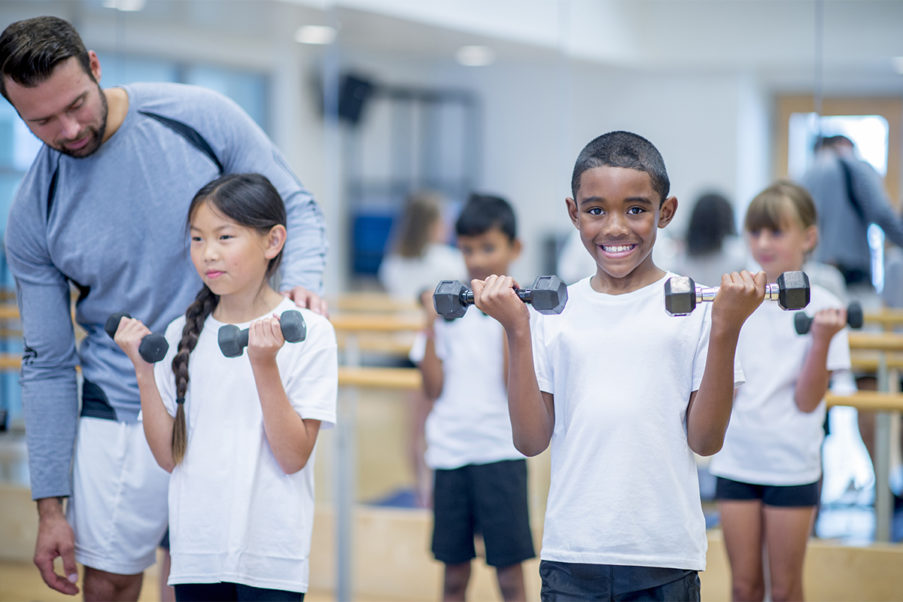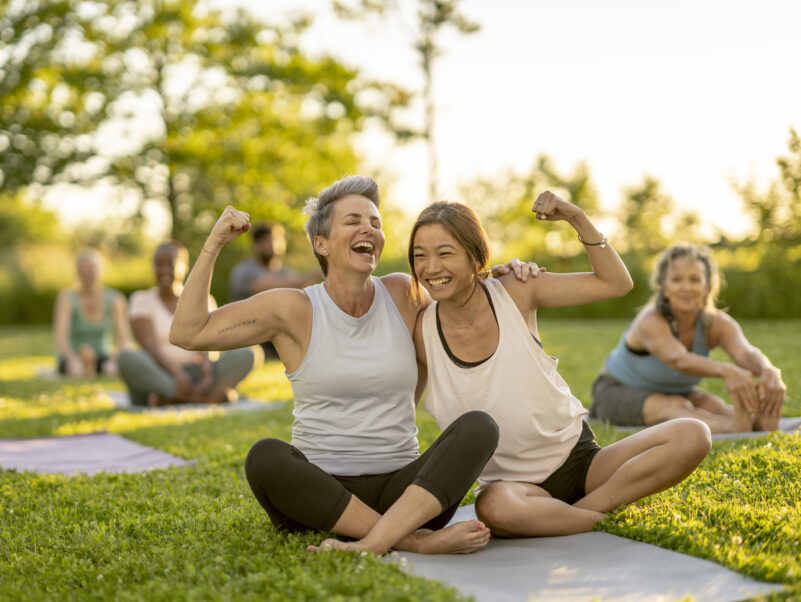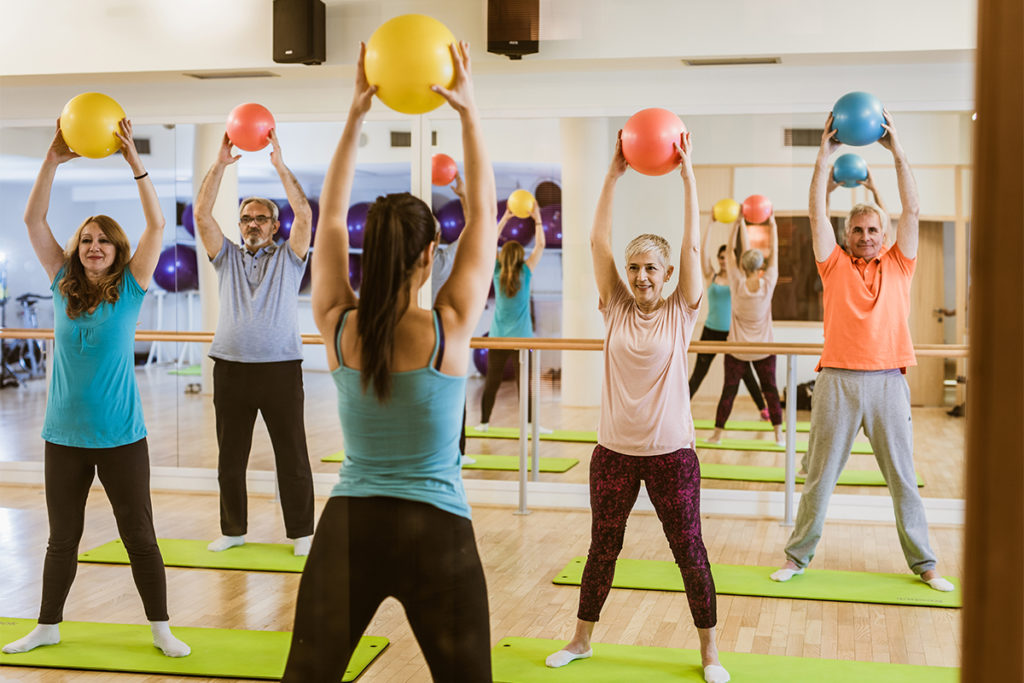Core Progressions on the Reformer
Help clients strengthen, define and refine the powerhouse.
The core plays an essential role in everyday activities. It facilitates movement and assists with posture, stabilization and support. Learning to use the core as a dynamic center is the key to efficient, safe and balanced movement.
Since core training has become synonymous with abdominal training, it’s important to understand that the core is made up of more than just the abdominals. The core is responsible for providing spinal structure and stability, as well as efficient movement. Pilates exercises utilize functional movement patterns that address movement efficiency, balance, flexibility, strength, coordination, speed, power and endurance. In essence, Pilates core training is an intelligent system that corrects imbalances—and strengthens and stabilizes weak muscles—from the inside out.
Many people train the core because they want to look good—they want a “six-pack.” However, in terms of core stability and movement, the abdominal muscles are not the key players. The core is composed of a deep inner unit and an outer unit. The inner unit includes the transversus abdominis, pelvic floor, multifidi and diaphragm. These are the deepest muscles that wrap around the spine and that support it under low loads (for example, when standing or sitting upright).
The outer unit includes many of the muscles that attach the femurs to the pelvis, the pelvis to the spine and the pelvis to the thorax. The outer unit plays some role in virtually every Pilates exercise and in all functional movement. Strength and power originate in the core of the body; when the trunk, torso and pelvis are strong and stable, power is transferred to all other muscles efficiently and effectively.
The goal of the following exercises is to maintain balance and strength in the core, create ease of movement and develop good, safe range of motion in the joints.
Exercise 1: Down Stretch
This exercise builds abdominal strength, shoulder stability and lumbopelvic strength and stability when moving the limbs.
Springs. One blue and one red.
Foot bar. High.
Start Position
- Kneel facing foot bar, feet against shoulder rests, hands on foot bar.
- Straighten arms and bring shoulders slightly behind wrists (adjust carriage to accommodate longer torso if necessary).
- Sit hips back between knees and ankles. Torso is long and neutral.
Movement Sequence
Inhale: Prepare and pull in abdominals to support torso and low back. Exhale: Press carriage back until torso makes straight line from shoulders to knees (keep arms still). Inhale: Maintain torso alignment and flex shoulders to move carriage back as far as you can while keeping back neutral. Exhale: Move carriage back to start position, keeping spine long and straight (eyes can look up, but head stays in line with thoracic spine).
Variations
- Single arm. Release one arm along torso as shoulders flex.
- Rotation. Release one arm to side and rotate torso to same side.
- Rotation with spinal flexion. Release one arm to side while rotating torso to same side as carriage moves back. Flex spine and round torso to bring carriage back to start position.
- Perform 4–6 times.
Observe client’s scapular stability. Also watch for ability to flex/extend shoulders while maintaining a stable torso.
Exercise 2: Side Semiplank and Stretch
This exercise builds side-body strength, shoulder stability and lumbopelvic strength and stability.
Springs. One blue and one red.
Foot bar. High.
Start Position
- Facing side, place knees together in middle of carriage.
- Laterally flex toward foot bar and place hand that is closer on bar.
- Keep other arm at side.
Movement Sequence
Inhale: Prepare and pull in abdominals to support torso and low back. Exhale: Press carriage out to make straight line from armpit to outside knee. Keep foot bar arm steady and strong as free arm reaches at downward angle toward shoulder rests.
Inhale: Bring carriage back to start position by laterally flexing spine, bringing knees back under hips and raising free arm overhead. Exhale.
- Perform 4–6 times each side.
Observe client’s ability to keep scapular/thoracic area stable while mobilizing. Also watch for well-performed shoulder abduction and adduction while sustaining lumbopelvic stability.
When done regularly, these exercises build a strong core that will effectively support the spine and move the body efficiently and safely through daily activities, as well as more rigorous sports and playtime. Having a strong core means being able to support and move the limbs without injury and stress.
Photography: Nora St. John. Model: Portia Page.
Resources
Page, P. 2010. Pilates Illustrated. Champaign, IL: Human Kinetics.
St John, N. 2007-2008. Pilates Reformer Level 1. Sacramento, CA: Balanced Body University.
Portia Page
Portia Page is a faculty member of Balanced Body® as well as the Education Project Manager and a STOTT PILATES®-certified instructor. She has been in the fitness industry for over 20 years and has served as a teacher, competitor, program director, instructor trainer and international presenter. A gold-certified Pilates teacher through Pilates Method Alliance®, Portia has been a master instructor for 24-Hour Fitness® and has helped develop and cultivate several new programs for their instructors as well as conducted trainings throughout the United States and abroad. Certifications: ACE and AFAA









